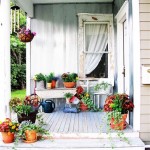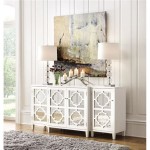```html
Southwest Home Decor: A Comprehensive Guide
Southwest home decor draws inspiration from the landscapes, cultures, and artistry of the American Southwest. This style is characterized by warm, earthy tones, natural materials, and rustic textures. It evokes a sense of tranquility and connection to the land, making it a popular choice for those seeking a comfortable and inviting living space. Its aesthetic is adaptable, ranging from minimalist interpretations to more elaborate expressions incorporating Native American and Spanish Colonial elements.
The enduring appeal of Southwest decor lies in its ability to create a sense of warmth and authenticity. It moves beyond fleeting trends, embracing timeless design principles that emphasize functionality and natural beauty. The use of handcrafted items and earthy color palettes fosters a feeling of connection to the environment, promoting a relaxed and welcoming atmosphere within the home.
Key Elements of Southwest Color Palettes
The color palette is fundamental to Southwest home decor. It’s anchored by warm, earthy tones borrowed directly from the desert landscape. Think of the hues found in the canyons, mesas, and sunsets of Arizona, New Mexico, and surrounding regions. Common colors include terracotta, sand, ochre, and various shades of brown. These foundational hues are often accented with pops of vibrant colors like turquoise, coral, and deep reds, drawing inspiration from Native American textiles and pottery.
Terracotta, in its many variations, is a cornerstone color. It can be used on walls, floors (particularly tile or brick), and accessories. Sand and ochre tones provide subtle warmth and serve as excellent neutral backdrops, allowing bolder accent colors to stand out. Brown, ranging from light beige to deep chocolate, connects the space to the natural earth and adds a grounding element to the overall design.
Accent colors are crucial for adding visual interest and personality. Turquoise, often associated with Native American jewelry and crafts, brings a touch of vibrancy and coolness to the warm palette. Coral adds a touch of warmth and femininity, while deep reds provide a sense of richness and drama. These accent colors are best used sparingly, either in smaller accessories like pillows and throws or in larger pieces like artwork or furniture upholstery.
The use of white or off-white is also significant in Southwest decor. These lighter shades help to balance the warmth of the earthy tones and create a sense of openness and airiness. They are often used on walls, ceilings, and trim to provide a clean and refreshing contrast to the richer colors. It’s important, however, to avoid overly bright or stark whites, as these can feel out of place in the overall aesthetic. Instead, opt for softer, more muted off-white tones that blend seamlessly with the rest of the color scheme.
Understanding the interplay of these colors is essential for creating a cohesive and authentic Southwest-inspired space. The key is to strike a balance between warmth, vibrancy, and neutrality, drawing inspiration from the natural beauty of the region.
Material Selection: Embracing Natural Elements
Material choice is another defining characteristic of Southwest home decor. Natural, raw, and textured materials are favored, reflecting the organic nature of the southwestern landscape. Wood, stone, leather, and natural fibers like cotton and wool are commonly used to create a sense of authenticity and connection to the environment.
Wood plays a significant role, often appearing in exposed beams, furniture, and flooring. Rustic, unfinished wood with visible grain and knots is preferred over highly polished or manufactured surfaces. Examples include reclaimed wood, cedar, and pine. The use of wood adds warmth, texture, and a sense of history to the space. It might be incorporated into ceiling beams, window frames, furniture like tables and chairs, or even as wall paneling to provide character and depth.
Stone, another essential material, is frequently used for flooring, fireplaces, and accent walls. Natural stone, such as flagstone, river rock, or travertine, is preferred for its organic texture and earthy tones. The use of stone adds a sense of permanence and ruggedness to the design. Stone fireplaces provide a focal point in the room, while stone flooring creates a durable and visually appealing surface. Additionally, smaller stone accents, like decorative rocks or stone pottery, can add subtle touches of Southwest charm throughout the home.
Leather is often used for furniture upholstery, adding a touch of luxury and sophistication while maintaining a rustic feel. Distressed leather, with its natural imperfections and worn appearance, is particularly well-suited to the Southwest aesthetic. Chairs, sofas, and ottomans upholstered in leather create a comfortable and inviting seating area. Leather can also be incorporated into smaller accessories, such as throw pillows and wall hangings, to add texture and visual interest.
Natural fibers, such as cotton and wool, are used extensively in textiles. Rugs, blankets, and pillows made from these materials add warmth, texture, and a touch of artisanal craftsmanship to the space. Look for textiles with geometric patterns inspired by Native American designs or those with natural, undyed colors to enhance the overall aesthetic. Coarse cotton and wool materials amplify the rustic and authentic nature of the style. Jute and sisal are also good options for rugs due to their durability and natural aesthetic.
The selection of materials should prioritize quality, durability, and authenticity. Natural materials not only enhance the visual appeal of the space but also contribute to a sense of connection to the environment, creating a warm and inviting atmosphere.
Incorporating Southwest Patterns and Motifs
Patterns and motifs are integral to Southwest home decor, drawing inspiration from Native American weaving, pottery, and art. Geometric designs, animal representations, and stylized depictions of natural elements are commonly incorporated into textiles, artwork, and decorative accessories.
Geometric patterns are a hallmark of Southwest design. These patterns, often found in rugs, blankets, and wall hangings, are characterized by their intricate repeating designs and bold color combinations. Common geometric motifs include diamonds, triangles, zigzags, and stepped patterns that are often symbolic and have cultural significance. When selecting geometric patterns, consider the scale and color palette to ensure they complement the overall design scheme without overwhelming the space.
Animal representations, such as coyotes, eagles, and lizards, are also frequently used in Southwest decor. These animals hold symbolic importance in Native American cultures and are often depicted in artwork, pottery, and textiles. Animal motifs can add a touch of whimsy and personality to the space, while also reflecting the region's rich wildlife. Consider incorporating animal motifs in subtle ways, such as through decorative figurines, framed prints, or embroidered pillows.
Stylized depictions of natural elements, such as cacti, mountains, and sunsets, are another common theme in Southwest decor. These motifs capture the beauty and essence of the southwestern landscape and can be incorporated into various decorative elements. Cacti, in particular, are a popular choice, often appearing in plant pots, artwork, and textiles. Mountain ranges and sunset scenes can be depicted in wall murals, paintings, and photographs, adding a sense of depth and tranquility to the space.
Pottery is also a significant element of Southwest decor. Native American pottery, with its intricate designs and earthy colors, is often displayed as decorative art. The style of pottery can range from simple, unadorned pieces to elaborately decorated vessels. Pottery adds a sense of authenticity and cultural richness to the space. Consider displaying pottery on shelves, mantels, or tabletops to create focal points and showcase the craftsmanship of these unique pieces.
When incorporating patterns and motifs, it is important to be mindful of cultural sensitivity and avoid appropriating designs without understanding their significance. Research the origins and meanings of different patterns and ensure that they are used respectfully. By carefully selecting and incorporating Southwest patterns and motifs, one can create a space that is both visually appealing and culturally informed.
Ultimately, achieving a successful Southwest home decor scheme involves carefully considering the interplay of color, material, and patterns. Harmonizing these elements creates a cohesive and inviting space that is reflective of the unique beauty and cultural heritage of the American Southwest.
```
Warm Casual Southwest Style Hot In Decor

Southwestern Style S Rustic Look Back In Decor Spotlight The Columbian

Southwestern Design Style Topics

Southwest Decor Is Trending Here S How To Get The Look Havenly Blog Interior Design

Western Chic Interiors A Cowgirl S Guide To Decorating Southwestern Home Brumbaugh Furniture Design

Rustic Decor Ideas For Southwest Style Interior Design Rustico Tile

21 Southwestern Style Home Decor Ideas

23 Southwestern Living Room Ideas Showcase Contemporary Desert Aesthetic Southwest

Southwestern Interior Design Style And Decorating Ideas Impressive Western Home Decor Modern Southwest

Southwest Home Decor Decorating Ideas Horses Heels
Related Posts







